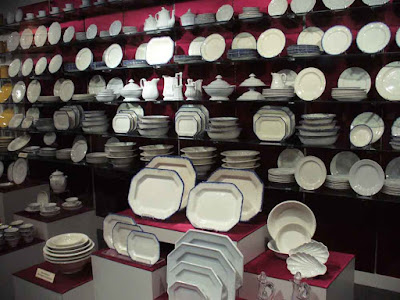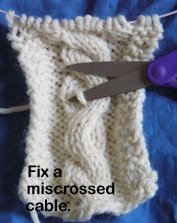.
On the 13th we took the streetcar up Main Street to see the Steamboat Arabia museum.
Steamboating was a parlous way to make one's living, and a parlous way to travel. The average age of a steamboat on the Missouri River was 5 years.
The Arabia was bound north from Kansas City in 1856, when she struck a snag in the river which ruptured her hull. All the people were safely offloaded, but the cargo went down.
In 1988, some people decided to salvage the cargo.
This is an aerial photo of the farm over the Arabia (the river's course had changed in the mean time). They used technology (and drills) to locate the Arabia. You can see her outline in the lower right quadrant of the pic.
She was buried a good way under the surface of the ground, and she was a good way below the water table, too. They had to pump out thousands and thousands of gallons of water, day and night, to keep the hole empty enough of water for them to be able to work. Salvaging this stuff was non-trivial
This is a closer crop of the above. Those three things side by side, below the steam shovel, are the Arabia's boilers. The pipe things that go straight up, then straight over, are part of the system of pumps keeping it relatively dry down there.
This is hard to read, but I thought it was interesting............
Once they got at the stuff (including parts of the boat), there was the problem of preservation. While many organizations had salvaged ships and parts of ships from salt water, very very few knew anything about preserving wood and other organic goods that had been submerged in fresh water for over 100 years.
Not only was getting the stuff up a lot of work, but figuring out what to do next was an issue, and then doing what needed to be done to preserve/conserve everything...............
The depth and breadth of this collection are mind boggling. It's not just that there are so many clothespins, say, but that there are so many different kinds of clothespins..............
They say this is the biggest collection, anywhere, of consumer items from 1856, and I bet they are right.
Stuff from all over the place.
That dragon thing's label says "Belgium."
A few tin things.
Some china.
Table knives. You can see what I mean about a lot of different kinds.....
Forks.
Spoons. Dishes. Glassware.
Food. Bottled fruit (for pie filling, we were told), and oysters.
Fancy pins and thimbles.
Pen nibs. Again -- so many different kinds! Who knew there were all of these choices, on the frontier? Not I.......
Two kinds of clothespins and irons.
Wooden matches in wooden boxes.
Buckets, iron items, china. The yellow dishes at right are just barely visible at the far left of the first pic of lots of china.
Pocket knives. The variety!
Two-man saw, shovel, hand saws.
Fancy hand saws (closer look at one of the sets of saws above).
.
Subscribe to:
Post Comments (Atom)





































No comments:
Post a Comment